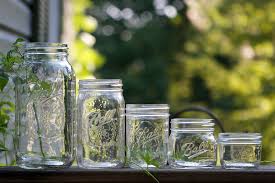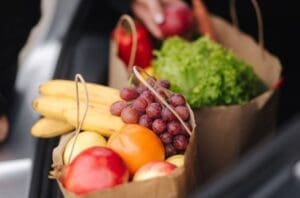By: Kaitlin Moore, K-State Research & Extension
A new kitchen gadget is gaining popularity on social media: vacuum-sealing mason-style jars. Several brands are available, but the descriptions and images might suggest these tools are a replacement for the research-based canning and heat processing procedures. Mason-style jar vacuum sealers cannot be used to preserve foods that would otherwise be canned and processed in a heat treatment (boiling water bath, atmospheric steam canning, or pressure canning).
To use, a mason-style jar is filled with food and the standard lid is applied. The vacuum sealer device is aligned on top of the lid, turned on, and oxygen is removed. This creates a vacuum inside the jar which holds the lid in place. This seal might not be air-tight because the plastisol band (sealing compound) on the lid is not heated.
Vacuum sealing can extend the shelf life of foods by creating an environment within the jar that has little to no oxygen. Many types of bacteria need oxygen to survive and multiply. Depending on the time and temperature conditions, fatty acids in foods can become rancid if they are exposed to oxygen. By removing the air from inside the jar the shelf life of the food can be improved. However, Clostridium botulinum and Listeria monocytogenes can survive without oxygen and be a serous food safety risk.
Additionally, filling a jar with steaming hot food and then using the vacuum sealer gadget to seal the jar is not a safe process. When food is properly canned and processed, it reaches an internal temperature of at least 212F for boiling water bath and atmospheric steam canning, and a temperature between 240 and 250F when pressure canning. These temperatures play an important role in destroying bacteria and creating a safe environment within the jar.
Vacuum-sealing mason-style jars can be used to safely store and extend the shelf life of certain foods such as dehydrated herbs, spices, grains, legumes, nuts, seeds, and dried fruits and vegetables.
This article is from the September/October 2024 issue of the Preserve It Fresh, Preserve It Safe newsletter, co-published by the University of Missouri Extension, Kansas State University Agricultural Experiment Station and Cooperative Extension Service, and The North Central Food Safety Extension Network, you can sign up to receive these newsletters electronically at extension.missouri.edu/programs/food-preservation. If you live in K-State Extension’s River Valley District, which includes Clay, Cloud, Republic, and Washington counties, and have questions about food safety, food preservation, or canning, please reach out to Kaitlin Moore, Nutrition, Food Safety & Health Agent, at 785-243-8185 or kaitlinmoore@ksu.edu.













